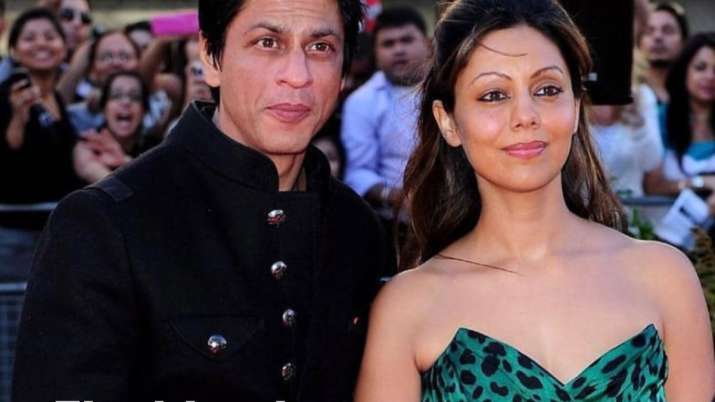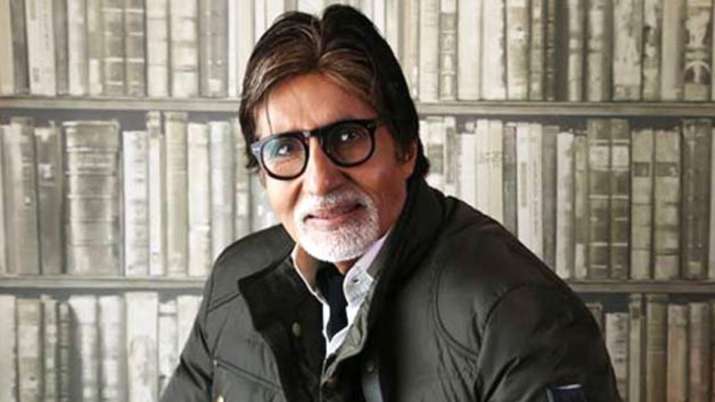Rating: 4/5
Price: Rs 12,999
About a year and a half ago, we reviewed the Amazfit GTR and were mighty impressed with its design, wide array of fitness features and unreal battery life. Its successor has now arrived, and it promises to up the style quotient further and also has a few additional tricks up its sleeve. Time to see if the Amazfit GTR 2 can walk the talk.
The design just got even better
I am still quite fond of the Amazfit GTR’s design, and it remains one of the best-looking fitness watches in the sub-Rs 15,000 segment. The GTR 2 takes the finesse a notch higher by making the watch look almost bezel-less courtesy of a curved glass that encompasses the outer ring, too. The designers have smartly put minute markers on the periphery that nicely blend in with several analogue watch faces, making the watch feel completely bezel-less. It has a round dial and a stainless-steel body. Despite the sturdy steel construction, the company has managed to keep the GTR 2’s weight to under 40 grams (without straps).
Amazfit has done away with the brown leather-like strap on the GTR and replaced it with an all-black faux leather strap on the GTR 2. You have the freedom to replace it with any third-party 22 mm strap you like, which is a good thing. The watch is extremely comfortable to wear for long hours, and the strap material doesn’t cause sweating or skin irritation even after prolonged use. A couple of physical buttons grant you quick access to the watch’s features and fitness modes, along with the touchscreen.
Sharp AMOLED display with a variety of watch faces
The Amazfit GTR 2 has a sharp, 1.39-inch AMOLED display with a resolution of 454 x 454 pixels that translates to 326 ppi pixel density – same as that of an Apple iPhone 11 screen. The touchscreen has a layer of tempered glass to protect it from scratches, but it hasn’t been made by Corning this time. However, there wasn’t a single scratch on the screen even after using the watch for weeks. It also features an anti-fingerprint coating that works quite well, and you don’t need to keep wiping the screen frequently.
The screen has auto and manual brightness controls and is legible outdoors even under bright sunlight. However, the screen is quite reflective, so expect a bit of glare from certain angles. You just need to flick your wrist to activate the screen. There are two sensitivity settings for that - Normal and Sensitive. The company seems to have lowered the sensitivity of both, and the screen was a little slow to switch on even in Sensitive mode. If it doesn’t wake up after a flick, you can always press either of the physical buttons to do that. You can also schedule to turn off the ‘lift wrist to view’ feature from the app during your sleep hours.
The Amazfit GTR 2 also supports Always On display that primarily displays the time. It does drain the battery a bit, but not excessively. One cool feature here is the screen can rotate 180 degrees, and you can have the physical buttons on the right or left side of the watch for easier access, depending on which hand you wear it on. It also supports wear detection, which lets you automatically lock the screen when you take the watch off.
The watch comes preloaded with a handful of watch faces, most of which can be customised to display a variety of information including steps count, calories burned, heart rate, battery and more. There are dozens more available in the Zepp app, but those cannot be customised. The good part is, unlike most budget fitness watches, the GTR 2 lets you store a lot more faces on the watch itself. I am not sure what the limit is, but every single one I added from the app, stayed on the watch. At one point, I had a dozen watch faces stored on the watch, and could switch between them on the fly.
Simple user interface, but the app needs a refresh
As with all Amazfit watches, you need to download the Zepp app, add your device on it and sync it over Bluetooth. It may take a bit of time initially, but once it is set up, things work smoothly. You can control several aspects of the watch like adjusting the screen brightness and activity selection from the screen itself, but certain watch settings can be accessed and configured only from the app. The overreliance on the app has gone down significantly in comparison to the last GTR. Beyond the initial configuration, you mainly need it to add more watch faces, set your fitness goals, get daily/weekly/monthly fitness reports and manage alerts and notifications.
The app interface hasn’t undergone much of a change over the last couple of years and feels a bit dated. It can do with a refresh and needs to be a bit more intuitive, too, with related settings grouped together. Currently, one needs to go looking for certain options across multiple tabs. There is little to complain about with the watch UI, though. It is quite easy to use, and all you need to do is swipe down on the screen for settings, swipe up to access notifications, and swipe left or right to browse through functions such as heart rate, weather info, music playback and daily goals progress. One of the physical buttons acts as a shortcut for all watch functions and also doubles up as a home button. The other button gives you access to all workout modes.
Limited smartwatch features
Like most fitness watches not based on popular platforms like Wear OS or Tizen, there are limited smartwatch options and no app ecosystem. The Amazfit GTR 2 lets you answer or reject calls from the watch screen. In fact, the watch has microphones and a speaker, and you can have a quick conversation from the watch itself if the phone isn’t at hand; the quality is barely passable, though. Alternatively, you can route the call to a Bluetooth headset from the watch.
The screen is large enough to read all the notifications and messages you choose to enable. However, you cannot reply from the watch. You can opt to receive notifications from almost all apps on your phone, along with event reminders and weather updates. This watch lets you store up to 3 GB of audio files and control music playback. That said, there is no option yet to stream music directly from any online platforms.
Fairly reliable fitness tracking
As a fitness tracker, this watch offers plenty of options. The Amazfit GTR 2 can track 12 different kinds of workouts indoor and outdoor – from walking and running to cycling, swimming and more. While it tracks your outdoor activities perfectly courtesy of the GPS module, the indoor tracking isn’t too bad either. The steps counter is a little slow to react when indoors, but thanks to the multiple sensors present here, it does a more than decent job, though the steps count is slightly on the conservative side. The good part is, it doesn’t report false steps.
The Amazfit GTR 2 is 50 metres water-resistant, so you can wear it for a swim without a worry. The watch supports continuous heart rate monitoring, and you can choose the frequency of monitoring in the app, the higher the frequency, the higher the battery drain. A good balance can be achieved by setting the frequency to five minutes and keep the Activity Detection setting switched on. When the watch detects some significant physical activity, it automatically increases the monitoring frequency for more accurate readings and analysis. After you are done with the workout, the frequency drops again to save battery.
All the fitness data is available in the app and it presents you with a daily, weekly and monthly breakdown of various fitness activities you indulged in during that period. It also displays a weekly PAI (Personal Activity Intelligence) score, that gives you an idea of how active you have been over the past seven days. It combines information from all forms of exercises, heart rate, activity duration and other health data into a single score for your reference. Your goal is to simply reach the 100 mark every week.
The sleep quality tracking feature seems to work well. It gets the overall sleep duration pretty much spot on from the time you fall asleep till you wake up. It tracks the quantum of light sleep, deep sleep and awake time. Now, the product page of GTR 2 states that it tracks REM periods too, but in reality, the data wasn’t available. Interestingly, REM sleep information is also available in the cheaper Amazfit Bip U that sells for less than a third of the price of this watch. This is probably a software issue for the company to look at, as lack of that info impacts the overall sleep quality analysis. You also have an option to measure your stress levels that you can check manually or set to all-day monitoring. Stress is calculated on the basis of the wearer’s heart rate variability.
Some of the newer features need more fine-tuning
As I mentioned earlier, the Amazfit GTR 2 has a handful of cool new tricks up its sleeve, but most of them seem like work-in-progress. It supports offline voice commands, but they are more miss than hit for now. Alexa support is expected in the near future, and that may actually make this a lot more functional. The watch has a built-in speaker that lets one play music. Understandably, the sound quality isn’t great and it’s best to use Bluetooth earphones instead.
The biggest disappointment for me is the poor implementation of a particularly useful feature – blood oxygen saturation measurement or an oximeter. The SpO2 sensor is probably the slowest I have come across in fitness watches. It takes almost a full minute to get a measurement, and that too only if the watch thinks you are steady enough with the watch face pointing upwards. Often, I had to repeat the process twice or thrice to get a reading, and that is unacceptable. Ironically, the significantly cheaper Amazfit Bip U gets it done in 30 seconds flat with similar accuracy.
Good battery life but not as good as its predecessor
Amazfit claims a battery life of 14 days on a single charge under a typical usage scenario that the company defines as “voice assistant on, wear all day, heart rate always on, sleep monitoring, Bluetooth talk for 30 minutes a week, connect earphones for 30 minutes per week, exercise 3 times a week, each time turn on GPS for 30 minutes, raise the wrist to light up the screen 30 times a day, 150 message pushes per day, blood-oxygen detection 2 times a day”. The figure is pretty much on the money.
In real-world testing with conditions somewhat similar to the typical usage scenario but with sleep monitoring turned on only for 5 days, heart rate monitoring set to 5 minutes and without playing any music, the Amazfit GTR 2’s battery lasted 18 days on a single charge. If your usage is on the heavier side, you will still get 10 days out of it. These are very good numbers, surpassed only by its predecessor, that would go on for anything between 21 days to a month. Its 471 mAh battery takes about 2.5 hours to charge fully with the bundled 2-pin magnetic charger.
Amazfit GTR 2 price and verdict
The Amazfit GTR 2 sells for Rs 12,999 in India with a one-year warranty. For that price, you get a stylish fitness watch with an excellent AMOLED display, built-in GPS, reliable fitness tracking, 50 metres water resistance and a solid battery backup. The price, though a couple of thousand rupees higher than the first GTR, seems fair for what it offers along with the nicer exterior. But ironically, you will be paying most of the premium for the extra functions that barely work.
To complicate matters further, Amazfit launched the GTR 2e for just Rs 9,999 soon after, that looks similar, offers most of the GTR 2’s functions, barring a couple of minor ones, and claims to deliver a whopping 24 days of battery life with typical use, making it a better deal than this. If there was ever a perfect example of cannibalisation…
Mind you, the Amazfit GTR 2 is a great all-round product. It’s just that the GTR 2e is pretty much the same, but costs less.
from Firstpost Tech Latest News https://ift.tt/3kyg1Mn

 Kehsa, known for her quirky fashion, gained fame through her electro-pop songs and dance-pop performances.
Kehsa, known for her quirky fashion, gained fame through her electro-pop songs and dance-pop performances.






 Eggplants boosts cognitive health. The phytonutrients and potassium in eggplants ensure oxygen supply to the brain. Here are its other benefits.
Eggplants boosts cognitive health. The phytonutrients and potassium in eggplants ensure oxygen supply to the brain. Here are its other benefits. Benefits of having a spoonful of ghee everyday are immense. Therefore, to reap its exceptional nutritional value one must incorporate this wonder ingredient in everyday meal.
Benefits of having a spoonful of ghee everyday are immense. Therefore, to reap its exceptional nutritional value one must incorporate this wonder ingredient in everyday meal. Even though getting rid of those stains can feel annoying, we offer you some tannin removal hacks to put your woes to rest.
Even though getting rid of those stains can feel annoying, we offer you some tannin removal hacks to put your woes to rest.